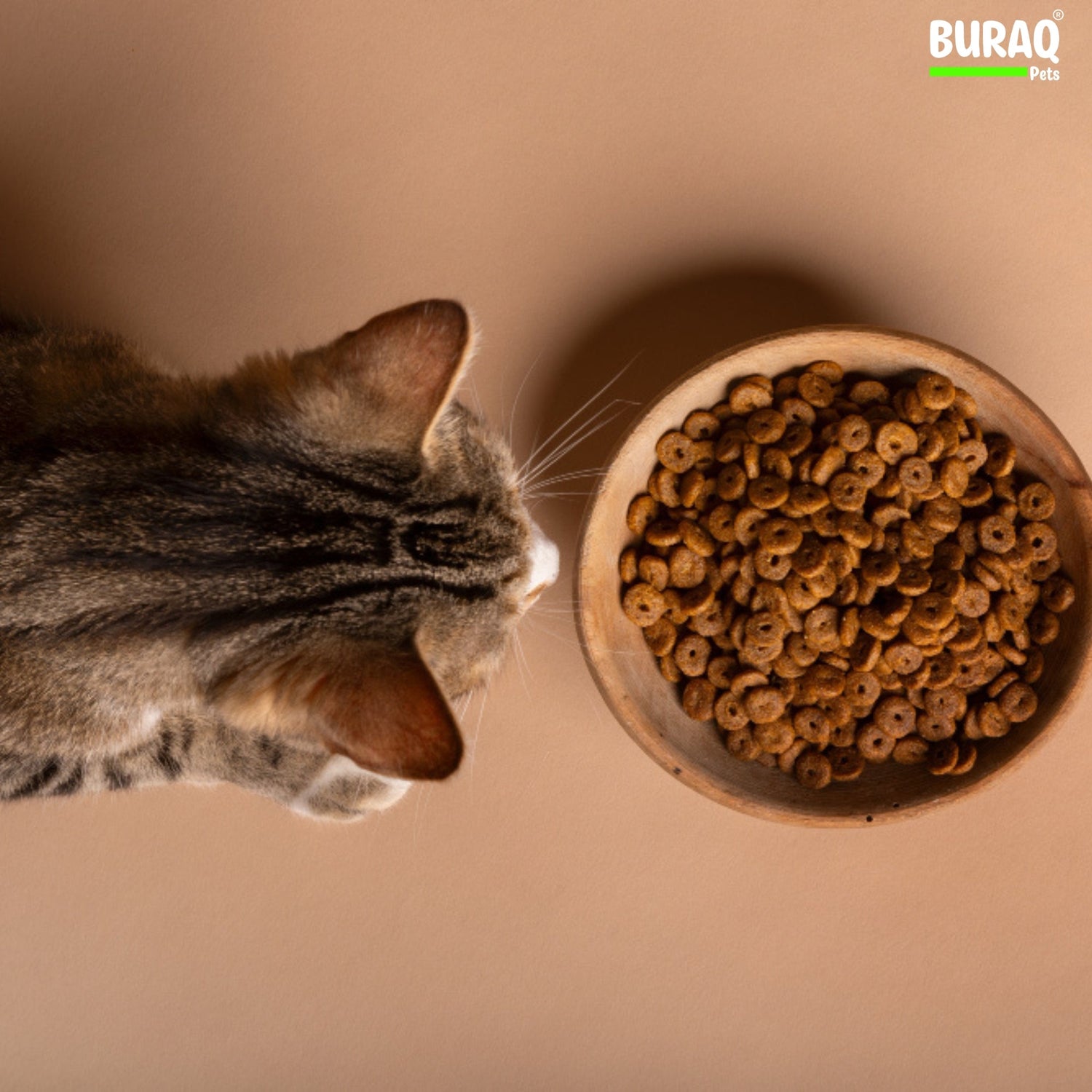 As an Indian pet parent, you’ve probably stood in the pet store aisle, reading ingredient labels on expensive dog treats and wondering if there’s a better way. The good news? Making homemade dog treats India has become increasingly popular among pet parents who want to ensure their furry friends get the best nutrition without breaking the bank.
As an Indian pet parent, you’ve probably stood in the pet store aisle, reading ingredient labels on expensive dog treats and wondering if there’s a better way. The good news? Making homemade dog treats India has become increasingly popular among pet parents who want to ensure their furry friends get the best nutrition without breaking the bank.
Creating treats at home isn’t just about saving money – it’s about knowing exactly what goes into your dog’s body. When you make treats in your own kitchen using ingredients you trust, you’re giving your pup something far more valuable than any store-bought option: your love, care, and attention to their health.
Indian households are perfectly equipped for making delicious, nutritious dog treats. From the oats in your pantry to the sweet potatoes from your local sabzi mandi, everything you need is probably already within reach. Plus, with India’s growing awareness about pet nutrition and the rising costs of imported treats, homemade options make perfect sense for budget-conscious families who refuse to compromise on quality.
Why Homemade Treats for Dogs Are Better Than Store-Bought
When choosing treats for dogs, homemade options offer complete control over ingredients and quality. Commercial dog treats often contain preservatives, artificial colors, and fillers that provide little nutritional value. Some even include ingredients that can cause allergic reactions or digestive issues in sensitive dogs.
The benefits of making your own treats extend beyond just health considerations. You’ll save significant money – a batch of homemade treats that costs ₹50-100 to make can easily replace store-bought options worth ₹300-500. This is especially important for Indian families who want to provide the best for their pets while managing household budgets effectively.
Homemade treats also allow you to customize recipes based on your dog’s specific needs. If your pup has a sensitive stomach, you can avoid problematic ingredients. If they need to lose weight, you can control portion sizes and reduce calories. This level of personalization is impossible with commercial treats.
The bonding experience shouldn’t be overlooked either. Dogs love being involved in kitchen activities, and the smell of treats baking creates excitement and anticipation. Your dog will associate these positive experiences with you, strengthening your relationship while providing them with healthy snacks.
Essential Safety Guidelines for Making Healthy Treats for Dogs
Before we dive into recipes, understanding ingredient safety is crucial for making healthy treats for dogs. Indian kitchens contain many dog-safe ingredients, but also several that can be harmful or even toxic to our four-legged family members.
Safe Ingredients from Indian Kitchens:
Rice, both white and brown varieties, provides gentle energy and is easy on sensitive stomachs. Moong dal offers excellent protein and is highly digestible for most dogs. Chicken, when boiled and boneless, serves as a lean protein source that most dogs love. Eggs, whether boiled or lightly scrambled, provide complete protein and essential fatty acids.
Certain spices can actually benefit your dog’s health. Turmeric offers anti-inflammatory properties and supports the immune system – just use small amounts. Cinnamon provides anti-inflammatory benefits and can help regulate blood sugar. Fresh ginger helps with nausea and digestive issues, while basil contains essential minerals and vitamins.
Ingredients to Strictly Avoid:
Garlic and onions top the dangerous list – they can cause anemia and serious gastrointestinal problems. Even small amounts can be harmful, so avoid any recipes or leftover food containing these ingredients. Nutmeg can cause severe digestive distress and should never be used in dog treats.
Black pepper might interfere with medication absorption and can irritate your dog’s digestive system. All spicy masalas, including garam masala, red chili powder, and curry powders, can cause digestive problems and should be avoided completely.
Chocolate, grapes, raisins, and xylitol (artificial sweetener) are extremely toxic to dogs and can cause serious health emergencies. Always double-check ingredient lists and keep these items completely away from your dog.
Preparation Safety Tips:
Always wash your hands before handling ingredients, and use clean utensils and surfaces. Store ingredients properly to prevent spoilage, and never use anything that smells off or looks questionable. When introducing new treats, start with small amounts to ensure your dog doesn’t have any adverse reactions.
5 Simple Dog Treat Recipes Every Indian Pet Parent Should Try
Our collection of dog treat recipes uses ingredients commonly found in Indian kitchens, making them both accessible and affordable for pet parents across the country.
Recipe 1: Oats & Peanut Butter - Among the Best Dog Treats for Protein
This protein-packed recipe combines the nutritional benefits of oats with the irresistible taste of peanut butter. These treats provide sustained energy and are perfect for active dogs or training sessions.
Ingredients:
- 2 cups rolled oats
- ½ cup natural peanut butter (ensure it’s xylitol-free)
- 1 egg
- ¼ cup water
- 1 tablespoon coconut oil
Instructions:
Preheat your oven to 180°C. In a large bowl, mix the oats with peanut butter until well combined. Beat the egg and add it to the mixture along with water and coconut oil. The dough should hold together but not be too wet – add more oats if needed.
Roll the mixture into small balls and place them on a lined baking sheet. Flatten each ball slightly with a fork to create a cookie shape. Bake for 12-15 minutes until the edges are lightly golden. Allow them to cool completely before serving.
These treats are excellent for dogs who need extra protein in their diet. The oats provide fiber for digestive health, while peanut butter offers healthy fats and protein. Store them in an airtight container for up to one week at room temperature.
Recipe 2: Sweet Potato Chews - Perfect for Digestive Health
Sweet potatoes are naturally sweet, rich in vitamins, and excellent for dogs with sensitive stomachs. These chewy treats are perfect for dogs who love to gnaw and provide natural dental benefits.
Ingredients:
- 2 large sweet potatoes
- 1 tablespoon coconut oil (optional)
Instructions:
Wash and peel the sweet potatoes, then slice them into strips about ½ inch thick. The thickness is important – too thin and they’ll become crispy chips, too thick and they won’t dry properly.
If using coconut oil, lightly brush the strips for added flavor and healthy fats. Arrange the strips on a baking sheet lined with parchment paper, ensuring they don’t overlap.
Bake at 120°C for 3-4 hours, flipping them halfway through. The treats are ready when they’re leathery and chewy but not crispy. Cooking time may vary depending on thickness and your oven, so check regularly during the last hour.
These natural dog treats are perfect for dogs who love to chew and provide excellent nutrition. Sweet potatoes are rich in beta-carotene, fiber, and potassium. They’re also naturally sweet, making them appealing to even picky eaters.
Recipe 3: Curd & Carrot Frozen Treats - Beat the Indian Summer Heat
Perfect for India’s scorching summers, these frozen treats provide cooling relief while delivering probiotics and vitamins. They’re especially great for dogs who need encouragement to stay hydrated during hot weather.
Ingredients:
- 1 cup plain, unsweetened curd (yogurt)
- 1 large carrot, finely grated
- 2 tablespoons honey (optional, for dogs without diabetes)
- Ice cube trays or small silicone molds
Instructions:
Ensure the curd is plain and doesn’t contain any artificial sweeteners or flavors. Greek yogurt works well too if available. Grate the carrot finely – larger pieces might be difficult for smaller dogs to manage when frozen.
Mix the curd and grated carrot in a bowl. If your dog enjoys sweeter treats and doesn’t have diabetes, add a small amount of honey. Stir until everything is well combined.
Spoon the mixture into ice cube trays or silicone molds. Tap the trays gently to remove air bubbles and ensure even distribution. Freeze for at least 4 hours or overnight until completely solid.
These frozen treats are perfect for hot Indian summers and provide probiotics that support digestive health. The carrots add natural sweetness and beta-carotene for eye health. Serve them outside or on a towel to avoid mess as they melt.
Recipe 4: Whole Wheat & Chicken Biscuits - Protein-Rich and Crunchy
These hearty biscuits combine the protein power of chicken with the wholesome goodness of whole wheat flour. They’re perfect for larger dogs or as high-value training treats.
Ingredients:
- 1 cup cooked, shredded chicken (boneless, skinless)
- 2 cups whole wheat flour
- 1 egg
- ½ cup chicken broth (low sodium, no onion/garlic)
- 2 tablespoons coconut oil
Instructions:
Cook chicken thoroughly by boiling or baking, then shred it into small pieces. Ensure there are no bones, skin, or seasoning. Let it cool completely before using.
In a large bowl, combine the shredded chicken with whole wheat flour. In a separate bowl, beat the egg and mix it with chicken broth and melted coconut oil. Add the wet ingredients to the dry ingredients and mix until a dough forms.
Roll the dough on a floured surface to about ¼ inch thickness. Use cookie cutters or a knife to cut into desired shapes. Place on a lined baking sheet and bake at 180°C for 20-25 minutes until golden brown and firm.
These protein-rich treats are excellent for active dogs and provide sustained energy. The whole wheat flour offers fiber and B vitamins, while chicken provides high-quality protein for muscle maintenance.
Recipe 5: Banana & Oats Cookies - Simple Energy-Boosting Snacks
These simple, three-ingredient cookies are perfect for beginner treat makers and provide natural energy from bananas and sustained nutrition from oats.
Ingredients:
- 2 ripe bananas
- 1½ cups rolled oats
- ¼ cup natural peanut butter (optional)
Instructions:
Choose ripe bananas with brown spots – they’re sweeter and mash more easily. Mash the bananas in a large bowl until smooth, leaving minimal lumps.
Add the rolled oats to the mashed bananas and mix well. If using peanut butter, add it now for extra protein and flavor. The mixture should hold together when pressed – add more oats if it’s too wet.
Drop spoonfuls of the mixture onto a lined baking sheet, pressing them down slightly to form cookie shapes. Bake at 180°C for 12-15 minutes until the edges are set and lightly golden.
These natural dog treats are perfect for dogs who love fruit flavors and need quick energy. Bananas provide potassium and natural sugars, while oats offer sustained energy and fiber for digestive health.
Storage Tips to Keep Your Natural Dog Treats Fresh
Proper storage is crucial for maintaining the quality and safety of your homemade treats, especially in India’s varied climate conditions. Unlike commercial treats with preservatives, homemade versions require more careful handling to prevent spoilage.
Room Temperature Storage:
Baked biscuits and cookies can be stored at room temperature for 5-7 days in airtight containers. Choose containers with tight-fitting lids and consider adding food-grade silica gel packets to absorb excess moisture, especially during monsoon season.
Keep treats away from direct sunlight and heat sources. In Indian summers, room temperature storage might not be ideal for soft treats or anything containing dairy products. Always check for signs of mold or unusual odors before serving.
Refrigeration Guidelines:
Refrigerator storage extends the life of most homemade treats significantly. Baked treats can last up to 2 weeks when refrigerated, while soft treats or those containing fresh ingredients should be consumed within one week.
Store treats in airtight containers or sealed bags to prevent them from absorbing odors from other foods. Label containers with preparation dates to track freshness. Allow refrigerated treats to come to room temperature before serving, as most dogs prefer treats that aren’t cold.
Freezer Storage for Long-Term Freshness:
Freezing is excellent for batch preparation and long-term storage. Most baked treats can be frozen for up to 3 months, while soft treats freeze well for up to 2 months. Double-bag treats to prevent freezer burn and maintain quality.
Portion treats into serving sizes before freezing – this allows you to thaw only what you need. Ice cube trays work well for portioning soft treats or purees. Thaw frozen treats in the refrigerator overnight rather than at room temperature to maintain food safety.
Climate-Specific Considerations:
India’s humid climate requires extra attention to moisture control. During monsoon season, even properly stored treats can develop mold quickly. Check treats daily for any signs of spoilage and discard anything that looks or smells questionable.
In extremely hot weather, consider refrigerating all treats regardless of type. The investment in proper storage containers pays off in reduced waste and better treat quality. When in doubt, it’s always safer to refrigerate or freeze treats rather than risk spoilage.
Common Mistakes to Avoid When Making Dog Treats
Even with the best intentions, new treat makers often make mistakes that can affect their dog’s health or the quality of the treats. Learning from these common errors helps ensure success from your first batch.
Overfeeding and Portion Control Issues:
The biggest mistake is treating homemade treats like regular food rather than occasional rewards. Treats should make up no more than 10% of your dog’s daily caloric intake. A medium-sized dog (20-25 kg) should receive no more than 2-3 small treats per day.
Many pet parents assume homemade treats are healthier so they can give more – this isn’t true. Even healthy treats can cause weight gain and digestive upset if overfed. Break larger treats into smaller pieces for training or use tiny portions for daily rewards.
Ingredient Substitution Errors:
Substituting ingredients without understanding their effects can be dangerous. Never substitute regular peanut butter with sugar-free versions that might contain xylitol. Don’t replace whole wheat flour with all-purpose flour without adjusting liquid ratios.
When recipes call for specific ingredients, there’s usually a nutritional or safety reason. If you must substitute, research the replacement thoroughly and understand how it might affect the final product and your dog’s health.
Storage and Freshness Mistakes:
Many people store homemade treats the same way they store commercial ones, forgetting that homemade versions lack preservatives. Never store soft treats at room temperature for extended periods, especially in humid conditions.
Don’t mix fresh treats with older ones in the same container – this can accelerate spoilage of the fresh batch. Always use the oldest treats first and regularly clean storage containers to prevent bacterial buildup.
Ignoring Individual Dog Needs:
Not all dogs can eat the same treats. Senior dogs might need softer textures, while puppies need smaller sizes. Dogs with allergies require careful ingredient selection, and overweight dogs need lower-calorie options.
Pay attention to how your dog responds to new treats. Some dogs have sensitive stomachs and need gradual introduction of new foods. Others might have preferences for certain textures or flavors that should guide your recipe choices.
Conclusion: Start Your Homemade Treat Journey Today
Making homemade dog treats india style is one of the most rewarding ways to show love for your furry family member. These recipes prove that you don’t need expensive ingredients or complicated techniques to create nutritious, delicious treats that your dog will absolutely love.
The journey from store-bought to homemade treats represents more than just a change in snacks – it’s a commitment to your dog’s health and happiness. Every batch you make strengthens the bond between you and your pet while providing them with nutrition you can trust completely.
Start with one recipe that appeals to you and uses ingredients you already have at home. As you gain confidence, experiment with different combinations and discover what your dog loves most. Remember, the best treats are made with love, patience, and attention to your dog’s individual needs.
Your dog doesn’t care if the treats are perfectly shaped or Instagram-worthy – they care about the time, effort, and love you put into making something special just for them. With these recipes and guidelines, you’re well-equipped to become your dog’s favorite chef.
For all your other pet care needs, from feeding bowls that make treat time special to carriers for vet visits and harnesses for daily walks, having reliable products makes pet parenting easier and more enjoyable.
👉 Looking for more pet care tips and trusted products? Explore Buraq Pets at www.buraqpets.com for quality pet accessories that complement your homemade treat journey.






